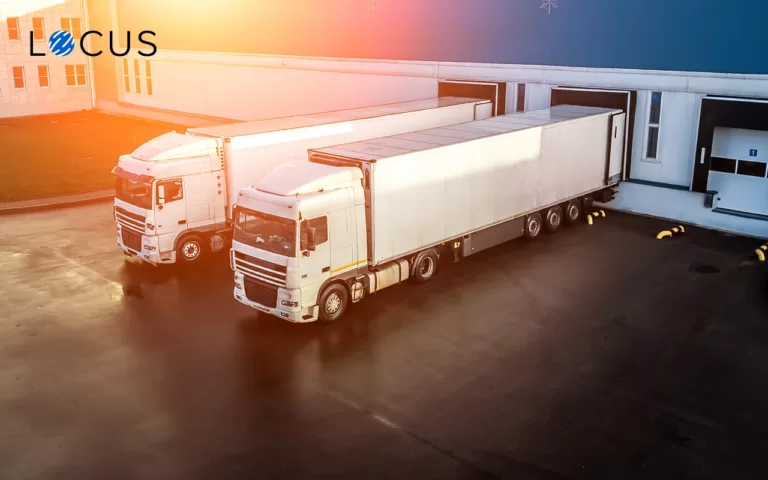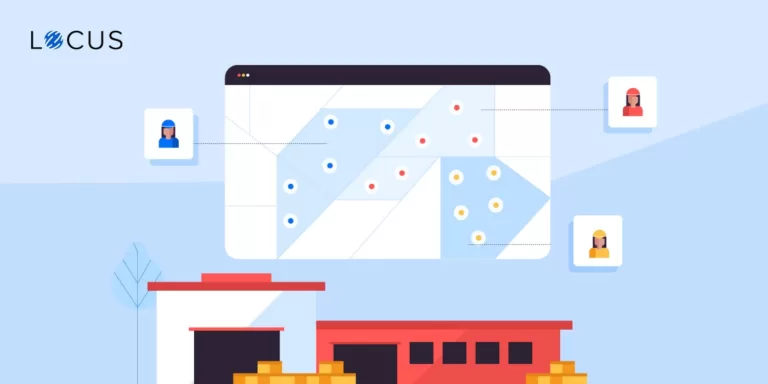Sustainability
Enable Sustainability from Raw Material Sourcing to the Last Mile
Jul 6, 2021
7 mins read

The days of small-scale sustainability are long gone, and the world demands more than mere lip service when it comes to green logistics. Companies all over the world and across all industries must devote themselves to creating and maintaining greener supply chains. We need to come up with models that have an increased focus on sustainability – models that ensure that consumer, business, community, and environmental interactions all work in tandem with one another.
What is sustainability all about?
The different priorities in sustainability include environmental stewardship, conservation of resources, reduction of carbon footprint, financial savings and viability, as well as social responsibility. The hallmark of sustainability in a supply chain is zero waste and zero carbon footprint.
While a greener, cleaner supply chain is the need of the hour, making it possible amidst Covid-induced disruptions and uncertainty is tricky business. A recent Oxford Economy study points to a paradox that stands in the way: the product and service innovation that is required for sustainability leads to more complex processes, increased costs, and shortage of resources, all of which are hindrances to success.
Managing sustainability along with efficiency is a balancing act. Broader structural changes are required to make sure they go hand-in-hand. A more holistic approach, not just in the last mile but throughout the supply chain, will help. Establishing and maintaining fundamentally different relationships with business partners, innovating in productions, and even creating completely new industry structures make up the future of the supply chains.
Why bother with it?
It turns out that out of all the other operations, supply chains have the greatest impact on most organizations. Complete Disclosure Project (CDP), which is an international non-profit organization dedicated to environmental disclosure, reports that end-to-end supply chains’ impact on emissions is more than five times that of companies’ direct operations. While this should be reason enough for companies to take urgent action, there are more grounds for choosing sustainability over all else:
- It’s a great competitive differentiation strategy: Doing well by doing good is most certainly a thing, and companies that adopt business models based on the circular- economy are proof of it. By taking up practices that enhance employee engagement and retention, they stand apart from their competitors and earn themselves a unique position.
- It brings returns on capital: Green sales and marketing increases revenue through increased share or price premiums. Operating costs are reduced by managing internal resources (food, water, carbon, energy, employee engagement). The product’s value proposition also improves with sustainable value chains.
- Offers tax and investment incentives: While consumers and Wall Street both realize its importance, the US government provides tax and investment incentives to businesses that opt to go green. This is mandatory in some regions, and in others, it is regarded as a corporate social responsibility.
- Increased focus on sustainability post-pandemic: Covid may have created an upheaval in many industries, but increased focus on environmental issues is one of the few good things to come out of it. Not just suppliers but corporate vendors too are seeking out sustainable practices. No wonder then that the 2020s have been named the Decade of Action by the United Nations, focusing on climate change, circular economy, and sustainability.
How to go about it?
- The first step is to figure out a company’s current supply chain standards. What are the improvement initiatives that are already in action? What is the speed of progress? What do the competitor’s initiatives look like?
- Step two is building a supply chain materiality matrix to detect the current issues in the supply chain as well as predict those likely to occur in the future.
- Step three is identifying the methods that can address these issues.
- Step four is coming up with a green performance strategy and transformation plan.
Three stages of building a sustainable supply chain
Planning – Planning processes are designed to reduce emissions and ethically satisfy demand with ethically sourced supply. More time and energy is spent on forecasts to reduce inventory that is no longer in use. Circular supply chains are supported, and end-of-life scenarios are predicted. Planning processes beforehand helps in visualizing the supply chain and preventing delays. Once the cycle is complete, the processes can be compared with the plan to point to areas of improvement.
Manufacturing – An essential aspect of sustainable supply chain manufacturing is monitoring energy consumption as a function of production volume. Getting a hold of co- and bi-products helps to minimize waste. Safety management ensures a sustainable workforce.
Logistics – Supply chain logistics help track, measure, and even optimize CO2 and energy consumption. It helps opt for resources that are energy efficient and CO2 neutral. In addition, a sound logistics and supply chain management system optimize the various legs of the process. Here is where Locus can play its role in implementing green logistics in your supply chain:
- Network Optimization
Transportation is an essential leg of the supply chain and also an energy-intensive one. Strategic network designing for both distribution and delivery operations can help to reduce fuel costs greatly and, at the same time, save time transporting goods from one place to another.
Locus’ NodeIQ, with its highly intuitive interface, not only optimizes the physical flow of goods from, say, point A to point B but also provides accurate placement of supply chain nodes, warehouses, and distribution hubs. NodeIQ’s Digital Twin solution creates a virtual replica of the real-world supply chain, which helps to optimize delivery networks and even create ‘what-if’ scenarios to prepare for all possible contingencies. This way Locus’ NodeIQ helps to improve distribution efficiency and reduce energy consumption.
- Route Optimization
The everyday logistics of delivering thousands of goods to their respective destinations can turn tedious if done manually. Pen and paper methods are not only inefficient when handling a large number of deliveries but can also be inaccurate and thus misleading.
DispatchIQ, Locus’ AI-driven solution, is responsible for intelligent clubbing of orders and aids in planning daily dispatches. Its geocoder simplifies even the most complex of addresses, saving time and leading to optimal handling of online orders and making room for rerouting. TrackIQ provides real-time Expected Time of Delivery (ETA) as well as advanced fleet tracking and insights. Order info, route schedules, and navigation can all be managed using the Locus On The Road App (LOTR).
Locus’ route planning software also makes use of Smart Rider Allocation to take rider preferences into account by factoring in driver lunch breaks, sick days, and crowded time windows. It also takes into consideration constraints such as traffic congestion and territory-based restrictions. Predictive alerts inform of any detours or a potential breach of plans. Thanks to DispatchIQ, fewer miles are driven, and the carbon footprint is reduced.
Green logistics practices can no longer be taken lightly. The need of the hour is to reassess supply chains end-to-end to come up with ways to ensure visibility and cut carbon emissions.
We need to be devoted to finding and adopting sustainable practices for a better, more hopeful future.
Sources:
- https://www.mckinsey.com/business-functions/sustainability/our-insights/starting-at-the-source-sustainability-in-supply-chains
- https://www.forbes.com/sites/sap/2021/04/30/the-sustainable-supply-chain-paradox-balancing-the-bottom-line-and-the-green-line/?sh=572c8d5c2e4b
- https://www.bcg.com/en-in/publications/2020/supply-chain-needs-sustainability-strategy
- https://www.planettogether.com/blog/strategies-for-sustainable-supply-chain
- https://supplychaindigital.com/digital-supply-chain/ntt-data-services-remodelling-supply-chains-resilience
- https://supplychaingamechanger.com/sustainable-logistics-making-the-last-mile-eco-friendly/
- https://futureofsourcing.com/how-to-assess-end-to-end-supply-chain-sustainability
- https://hbr.org/2010/10/dont-tweak-your-supply-chain-rethink-it-end-to-end
- http://www.sustainable-scf.org/
Infographics:
![Sustainability from Raw Material Sourcing to Last Mile [Infographics]](https://locus.sh/assets/img/infographic/resources/sustainability-from-raw-material-sourcing-to-the-last-mile.jpg)
Share this infographic by using this embed code:
<a href="https://blog.locus.sh/enabling-sustainability-from-raw-material-sourcing-to-the-last-mile/" target="_blank" style="text-align: center; display: block;"><img src="https://locus.sh/assets/img/infographic/resources/sustainability-from-raw-material-sourcing-to-the-last-mile.jpg" alt="Sustainability from Raw Material Sourcing to Last Mile [Infographics]" style="width:100%;height:auto;max-width:750px;margin:auto;"></a><br/>Infographic by <a href="https://locus.sh/">Locus</a>Related Tags:

Last Mile Delivery Optimization
Impact of Mega Distribution Centers in Logistics
Black swan events like Covid-19 pandemic have forced the logistics industry to rethink and replan their warehouse strategies. Before this pandemic, companies managed their warehouse operations using the Just In Time (JIT) principle. It has shaken up the supply chain activities from Just-In-Time to Never on time. For a JIT warehouse management to be successful, […]
Read more
Tech and Product
Solving Permanent Journey Planning at Locus
Author: Abhishek Goyal; Edited by: Kewal Krishna PJP aka Permanent Journey Planning – What is it? PJP refers to the day-level route planning mechanism for a fixed duration that a company or a distributor creates to visit several outlets in a specified region via several delivery partners for different products. Outlets can range from 500 […]
Read moreMOST POPULAR
EDITOR’S PICKS
SUBSCRIBE TO OUR NEWSLETTER
Stay up to date with the latest marketing, sales, and service tips and news



Enable Sustainability from Raw Material Sourcing to the Last Mile